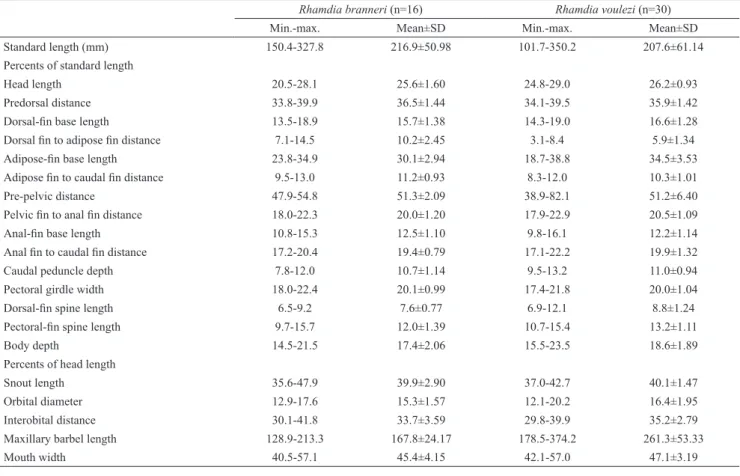Reappraisal of Rhamdia branneri Haseman, 1911 and R. voulezi Haseman, 1911 (Siluriformes: Heptapteridae) from the rio Iguaçu with notes on their morphometry and karyotype
Texto
Imagem




Documentos relacionados
Foi elaborado um livro educativo para leigos sobre prevenção e detecção precoce de câncer de pele denominado “Câncer de pele: conhecer para melhor combater”...
Distance from the tip of the mouth to the base of the pelvic fin D 1-2 Distance from the tip of the mouth to the insertion of the first dorsal fin D 1-3 Distance from the base
Assim como a transcrição do gene de receptor de vitelogenina, a transcrição da vitelogenina Tabela 7; Figura 20 não se mostrou alterada pela infecção, ou seja, este fato também
Borges & Araújo (1999) apontam para alguns fatores estratégicos na gestão universitária, considerando já as peculiaridades desta. Assim, no que se refere à implantação
The sequences from 19 specimens were deposited in the BOLD database, specifically in the project entitled Barcoding Rhamdia (BRH). Because there are not insertions,
A new species of Gladioglanis is described from a single locality on rio Aripuanã, rio Madeira basin, and can be distinguished from its congeners by the following characters:
under the same criteria for both males and females); dorsal- fin spine length (from base of spine to its distal tip); pectoral- fin spine length (from origin of spine to its distal



